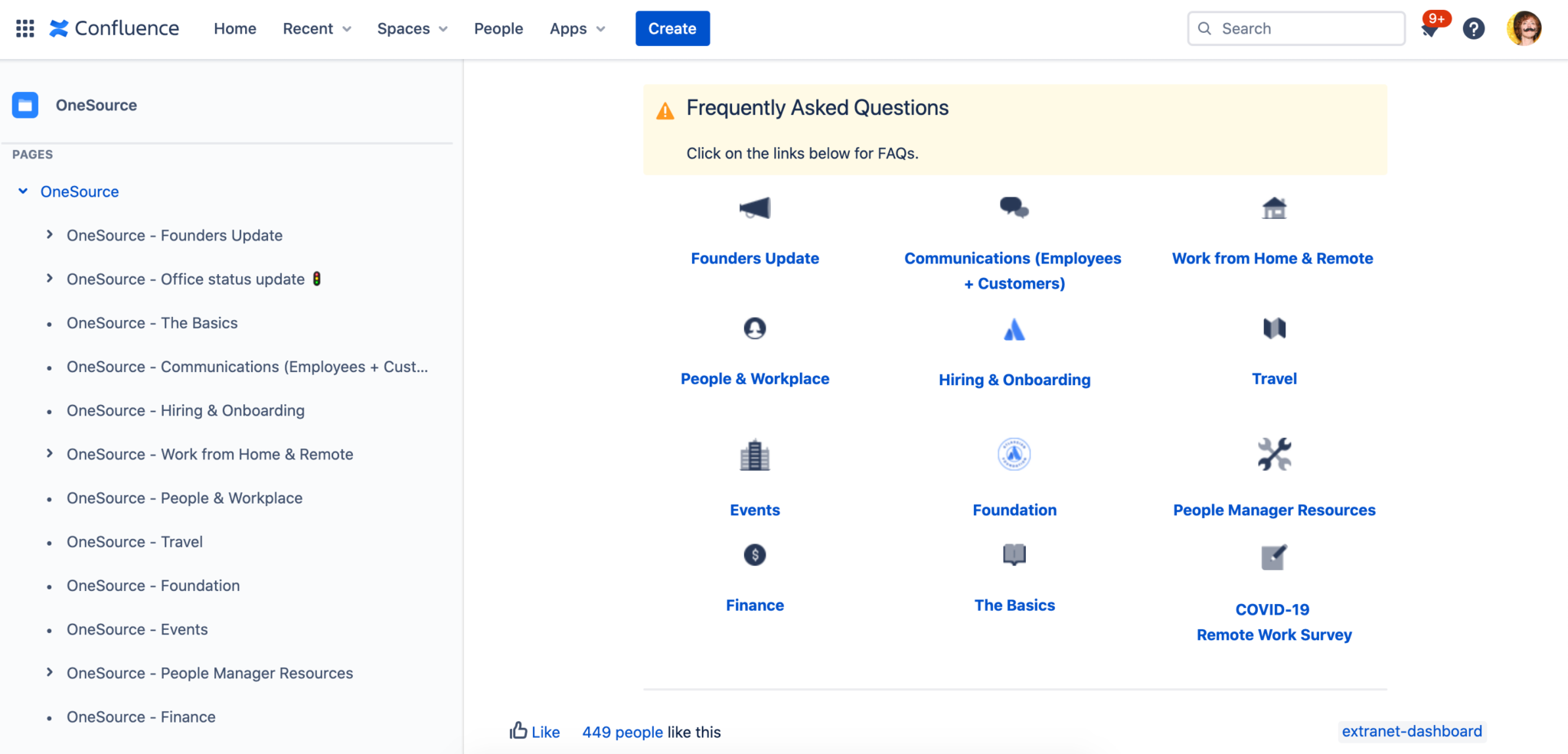Here’s the way to organize internal comms when you’re flying by the seat of your pants
Suddenly responsible for keeping everyone on the same page in a crisis? Use this guide to calm the fire drills (and your stress level).
You probably never thought it would come to this. Here you are – a director of HR or marketing or operations, perhaps? – with no formal training in internal communications, thrust into the position of keeping everyone in the company informed so they can stay focused on their work. Assuming responsibility for internal communications on short notice, particularly in a time of crisis, puts you at the center of a whirlwind of activity. Events are outside your control, timelines are unpredictable, and everything feels urgent. You’re not just refueling in mid-air, you’re building the plane while flying it.
So what’s the best way to transition from reactive mode to proactive mode? Create an internal communications plan.
In many ways, it’s similar to crafting a structured approach to stakeholder communications for high-stakes or long-running projects. According to L’Teisha Ryan, Head of Internal Communications at Atlassian, the goal is to be disciplined and deliberate, but not rigid.
“We’re constantly looking at how we can improve, evolve, and adjust,” she says. “When the COVID-19 crisis emerged, we started with emails from the company founders, open Q&A sessions on Zoom, and a central space in Confluence to share updates and FAQs, then added video updates after we closed our offices to help maintain a sense of connection. I’m looking at more adjustments in the coming weeks as we continue working from home through the end of the year.”
If you’re ready to get organized and step up your internal communications game, read on to learn all the ways having a plan will benefit you and how to put one together step-by-step.
What is an internal communications plan?
An internal comms plan can’t just live inside your head. An effective plan is a living document that describes who your various audiences are, what information you’ll communicate to each audience, which channels you’ll use, and how often you’ll communicate. Include success metrics, as well – e.g., 80 percent open rate on emails from the CEO.
Although the plan itself doesn’t need to be shared with the entire company, it should be open to anyone who’ll be helping you execute on it. (Don’t forget to involve your HR business partners and folks in similar people-flavored roles! They can help you scale by partnering with managers and making sure team members fully understand important changes.)
Why bother putting a plan together?
Chances are, you hardly have a moment to catch your breath these days and might be tempted to continue making it up as you go along. But investing the time to put a proper internal communications plan together will pay off in a few ways. You’ll be more consistent in your communications, which gives your fellow employees a sense of stability and helps reduce any anxiety they might be feeling. It also gives you greater peace of mind. You’ve got a map to guide your way forward, as well as a historical record to refer back to.
On the flip side, flying by the seat of your pants feels expedient in the moment, but can be disastrous in the long run. If people aren’t getting information through official channels, or if it comes sporadically, they’ll invent their own information. The resulting confusion will not only distract people from their work, it may result in project plans and budgets that are rooted in misinformation.
Without a plan, you also risk leaving important information out or overloading some of your audiences with information they don’t need. Not a good look.
Guiding principles for an internal communications plan
Before you dive into the tactical planning exercise, take a moment to set some guidelines for yourself. For L’Teisha and her team, defining their core principles came down to aligning with company values like “Open company, no B.S.” and “Build with heart and balance.” Here’s what we recommend as a starting point.
Transparency
Share information promptly, and err on the side of straightforwardness. This is especially true if you have to communicate bad news such as layoffs, furloughs, or pay cuts. Research shows that leaders wait too long to deliver this type of news, with negative impacts on both parties: the bearer of bad news carries the dread of delivering it, while the people affected have less time to adjust and may resent being kept in the dark. Either way, trust suffers across the entire organization.
Speaking of maintaining trust, be as open about the decision-making process as you are about what the decision is and how it affects your audience.
Empathy
An emotionally intelligent approach is always the right idea, and doubly so during times of uncertainty. Think about how your audience is feeling right now, and how you want to feel after they receive each communication. Remember that it’s easy to feel overwhelmed by too much information, so part of your job here is to keep your comms small enough to digest, yet robust enough to satisfy.
Beware of straying into ruinous compassion, however. Kim Scott, author of Radical Candor, reminds us that well-intentioned attempts to spare someone’s feelings can backfire. (Like not telling your friend she has spinach in her teeth to save her from the embarrassment of being told… then she attends a whole afternoon of meetings with the spinach still stuck in her teeth.) Communicating with empathy in this context is a balancing act. Be patient with yourself if you miss the mark and try to learn from it.
Discoverability
L’Teisha realized quickly that with all the different communication channels her team uses, information will become scattered and hard for employees to find later. So they set up a hub page in Confluence that makes it easy to refer back to past updates. It’s a win for her team, too: they don’t get pings every five minutes asking where the updated travel policy can be found.

Adaptability
Expect to evolve your plan as the situation changes and based on feedback you get from employees. (Bonus points if you proactively ask for feedback.) Review your plan every few weeks and adjust as necessary.
Customize your internal communications plan
Your internal comms plan will spell out how you’ll provide employees with the right information at the right time and via the right channels so everyone stays on the same page. Plan on spending an hour or two drafting it, with additional time for a round of feedback from your team.
Step 1
Start by laying out a 4 x 7 table with the columns labeled “Content, Audience, Channels, Purpose/Goals” Label the rows, “Daily, Weekly, Fortnightly, Monthly, Quarterly, Yearly, Ad Hoc.”
Tip
Check out our template here.
Step 2
Now think through who your various audiences are. For example, when L’Teisha and her team thought about how to approach internal comms when the coronavirus crisis hit, they identified six groups: the Atlassian board, our executive leadership group, the site leads at each of our office locations, the People/HR team, all other managers, and general employees.
Step 3
Determine the most effective way to communicate with each audience. Think about what content you’ll be sharing as well as the tool you’ll use to share it. At Atlassian, we’re using a combination of virtual town hall events with prepared updates and live Q&A, all-company announcements on Slack, written updates from the company founders using Confluence’s blogging feature, video updates from the founders, and email.
Step 4
Ok. This is the fun part. Ready? Deep breath, and…
Start filling in your table. You might find it easiest to go row by row, noting what you’ll be communicating on a daily basis, weekly, etc. Or, it might make more sense to go by audience, thinking through what each of them needs to hear about, through which channels, and how often. Don’t gloss over the goal of each communication. Build trust? Help people feel connected with their leaders? Announce new information? Other? Defining the purpose now will make it easier to compose your comms later.
Consider whether you should time communications differently for each group. For example, L’Teisha and her team communicate updates to execs or the leads for each office location before sharing them with all staff. “We’ve been very deliberate about providing leaders with information in advance”, she says. “This gives them a chance to think about how it will affect their teams, anticipate questions, and have thoughtful responses ready.”
As you work through, you might discover you’ll need to bring in new forms of communication to meet your audiences’ needs, or evolve existing ones. When Atlassian first transitioned everyone to working from home, our executive team heard from loads of managers that they felt like a fish out of water trying to lead their teams remotely. So our People team pulled together a series of webinars to train them on best practices, which were very well received.
Tip
People need to feel like they’re being heard. Set up a virtual suggestion/Q&A box using Jira Service Desk or Google Forms, and address the questions you receive in future communications.
Be sure to share the plan with your team and relevant stakeholders for review. They’ll help make sure nothing falls through the cracks.
Be authentic to be successful
Don’t stress if some things aren’t perfectly polished. We’re all “BBC dad” now, so we might as well embrace the messiness. What really matters is delivering timely, thorough information to the people who need it.
“One of the reasons we switched to video updates from the founders is that we wanted to bring a human touch into it,” L’Teisha tells me. “Those quirky moments like when Mike’s daughter popped into the room remind us that they’re having the same experience as the rest of us.”

Remember too that people may have wildly different feelings about whatever changes are taking place. For L’Teisha and her team, this means empathizing with the fact that not everybody is thrilled about the switch to remote work, and weaving that in so people feel validated and acknowledged.
Showing some personality and being candid about the fact that things are a bit upside-down right now are not only signs that you’re on top of it, but a breath of fresh air for the people receiving your updates. The more you keep it real, the more effective your communications will be.












































